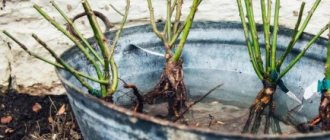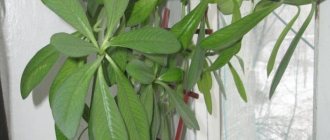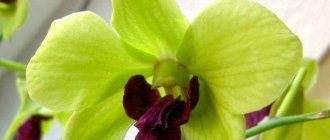Brief description of the Antik 89 variety
Antique 89 is classified as a looping rose; this variety is different:
- Large in size and classified as tall, the bushes reach 2-3 meters in height.
- They are wide, the stems are flexible but hard and require pruning.
- Flowers bloom in mid-summer, mainly at the end of the shoots.
- They are large in size and reach 13 centimeters in diameter.
- Rose has a pleasant, but not intrusive aroma.
- Suitable for cutting, retains its smell and appearance for 2 weeks.
The leaves of the plant are pleasant to the touch, green, bright, and not very many thorns. It does not require serious care and even beginners can cultivate flowers on the site.
Characteristics
- The growth of shoots in the Antik variety is slow; the decorativeness of the bush can be judged in the 3rd or 4th year of its life;
- the flowering period is long, lasting almost until the cold weather;
- the aroma of rose is unobtrusive, light, with fruity notes;
- The frost resistance of the plant is very high, according to the US Department of Agriculture (USDA), corresponds to zone 5. The bushes can withstand from -23°C to -28.9°C. If the winter is too frosty, the frozen plant can recover very quickly;
- the flowers have good resistance to rainy weather, do not droop due to dampness, and do not become stained;
- The colors and general appearance of the flowers also do not suffer from extreme heat. The petals do not fade, on the contrary, they become redder;
- Antik’s immunity is excellent - the variety practically does not suffer from black spot and powdery mildew;
- cut roses last up to 2 weeks.
Features in appearance
The variety is distinguished by a number of parameters that characterize it:
- in addition to a large, tall bush that blooms profusely, the plant is classified as repeat flowering, but the first flowering is longer than the second;
- roses form at the end of the shoots, the plant quickly forms young shoots;
- It is characterized by high winter hardiness, tolerates excess moisture well and is not afraid of bright sunlight;
- The flowers are bright, large, the petals curve outward, the petals are red in the central part and pink at the edges.
The bush looks spectacular, recovers quickly, blooms throughout the entire season, until October. They are not afraid of severe frosts, they do not burn under the sun, the light changes the shade of the petals, making them rich.
The plant has a pleasant aroma that persists even after cutting. Flowers can be used to decorate rooms; they are large and very beautiful.
Rose blossom
The plant is distinguished by abundant and lush flowering. This allows for the active use of culture in landscape design.
Period of activity and rest
Rose Monica (Monica) - what kind of cut variety is this, description
The culture is considered to be re-blooming. The first rich flowering is followed by a second. To do this you need to do the correct pruning. The second wave is characterized by no less lush buds. With the arrival of autumn cold weather, a period of rest begins.
Important! In order for flowering to continue as long as possible and to please with large buds, it is necessary to promptly remove dried flowers.
What to do if it doesn't bloom
The lack of flowering may be due to the following factors:
- incorrect choice of landing site;
- violation of the watering regime;
- deficiency of nutrients in the soil.
The main feature of the variety, bright detail Antique 89
A rose called Antique 89 with large, fragrant flowers attracts visitors with its impressive bud size. They bloom into beautiful, pink-red flowers.
Up to 5 inflorescences are tied on one thick stem. A characteristic feature of the variety is the uneven shade of the petals. Visually, the rose looks red, but the edges of the petals are pink.
During the first growing season, it may seem that the buds do not reach the desired size, the plant does not bloom profusely, and the shade of the petals is not the same. But the second growing season will change the gardener’s impression of the plant, so don’t rush to conclusions.
Agricultural technology
Before planting, immediately determine where the bush will grow, because frequent replanting will not benefit the plant. It is desirable that the area is well lit, protected from drafts, but has little ventilation. Planting can be done in spring (April) or autumn (late October-early November). Fertile, loose soil, such as loam, is suitable for Antique. Before planting, the area is dug up and nutrients are added - organic matter and mineral fertilizers, because the rose will bloom in one place for many years. For the winter in warm regions, the bush is not covered, but in cold regions it is advisable to lay it on a substrate of straw and cover it with a double layer of non-woven material on top. In spring, there is no need to rush to remove the cover immediately. Do this gradually, accustoming the plants to sunlight.
Pruning is very important for a climber. The main shoots are cut by 1/3, the side shoots are shortened to the 3rd bud. Old and dry branches are cut off close to the ground. Thanks to this pruning, the plant quickly grows young shoots. In order for the re-appearing buds to bloom as brightly as the first ones, do not forget that the faded heads must be trimmed in time. Fertilizing is carried out in the spring and after the first flowering.
An interesting feature of Antique is the ability to grow it not only as a climbing species. Thanks to its tough shoots, many rose growers grow the plant as a scrub. But according to reviews, the variety is not very suitable for arched structures, again due to poorly bending and thick shoots.
The Antique variety captivates with its unusual colors and long flowering. Rose growers praise its winter hardiness, ability to withstand bad weather and excellent immunity. The rose is unpretentious in care, so it is suitable for beginner gardeners. Of the minuses, many note that abundant flowering mainly appears only at the ends of the shoots. And due to the rigidity of the branches, difficulties arise with shelter in winter.
Back and forth
Photo
anna_tikhvinskaya
anna_tikhvinskaya
nadbogdanova83
nadu__sha__
kattin.sad
Diseases
Are there dark spots on the shoots of the rose? This could be necrosis, find out how to save the plant
Bark necrosis on roses
Does the rose begin to wither and die for no apparent reason? It could be root rot, find out control and prevention measures
Root rot of roses
Girdle spots of brick and burgundy shades appear on the shoots of roses, find out why this happens
Infectious rose burn
Are there growths and cracks on the rose? It could be cancer, read what to do next
Common rose cancer
This is a product of a famous German company. At exhibitions, flowers were presented under various names.
The shape of the plant, its unusualness, brings back memories of times that came before.
Tips for growing and caring
It is recommended to trim the plant regularly, and trim to 3 buds. In this case, the flowers will be distributed evenly along the stems. And not at the bottom.
Other useful tips:
- During the growing season, it is worth keeping an eye on the dried out buds; they are removed and cut off.
- By winter, cover the root system of the bush with film material, in several layers, so that the rose does not freeze.
- Do not rush to remove the film in the spring, do it gradually, because the rose bush needs to get used to the light of the sun.
- Before planting, feed with compost; you can use humus for this purpose.
The plant has thick and elastic stems, it is difficult to hide them under a frame-type shelter; in cold winter they can freeze. In this case, dead shoots should be trimmed.
How to plant correctly in open ground
Antique is an easy-to-grow variety; this rose is recommended for beginning rose growers .
Selecting a location
To plant antique climbing roses, preference should be given to southern, southeastern or southwestern areas , where solar activity will be at least 6 hours a day.
The soil (ideally slightly acidic loam) should be loose, fertile and well permeable.
Antique does not tolerate transplants very well, so the place for the rose must be chosen carefully so as not to injure the root system.
Preparing the soil and flower for planting
To plant a rose, the soil must be carefully dug up , loosened and the roots of weeds removed. Carefully inspect the seedling before planting: the root system must be healthy, without signs of fungus or rot.
The dried ends of the roots need to be cut off , and shoots with mechanical damage are also removed.
Useful tips for growing Antique 89
When cultivating a plant, various problems may arise; the following useful recommendations will help you avoid them:
- when planting a bush in the ground, add sand to the soil;
- during the growing season, use potassium and superphosphate fertilizers;
- The rose loves moisture, but the area will still have to be equipped with a drainage system.
If there is heavy rainfall, rose bushes may begin to rot, but this rarely happens. More often, dark spots appear on the leaves, which indicates excessive watering.
Flower propagation
Climber roses can be propagated in four different ways: sowing seeds, planting cuttings, rooting cuttings and grafting onto rose hips. At the same time, cuttings are much simpler and give better results.
For this:
- in the period from June to August, cuttings with 2 internodes or more are cut from fading or flowering shoots (the lower cut is under the bud at an angle of 45º, the upper cut is straight, at a distance of 5 cm from the bud);
- The lower leaves are torn off the cuttings, the upper ones are cut to the middle;
- cuttings are buried 1 cm in sand or a mixture of sand and soil in a suitable illuminated area, protected from direct sunlight;
- each cutting is covered with a glass jar;
- Watering is carried out without removing the jars as the soil dries.
By winter, the cuttings are unlikely to have time to take root well, so in the fall they are carefully dug up and transferred for storage to a cool room, sprinkling the roots with damp sand. You can leave cuttings in the ground for the winter, only by insulating them very well.
After winter, the seedlings are taken out of storage and planted in a greenhouse. It is allowed to open them only after a month, after gradually accustoming them to sunlight and open air. Replanting to a permanent location can only be done next spring.
Propagation of roses by cuttings
Pests
Microscopic spiders have appeared on the plant, and the rose is gradually becoming covered with cobwebs, what should I do?
Spider mite
Are small green insects destroying your rose? Effective methods of pest control.
Green rose aphid
Caterpillars have appeared on the rose and are twisting the leaves of the plant, how to deal with the pest
Rose leaf roller
Flat bumps have appeared on the shoots of the rose or on the underside of the foliage, how to deal with the pest
Rosen scale insect
Under the bright rays of the sun, the shoots may burn and dry out; if this happens, cut them off. The plant recovers quickly.
Advantages and disadvantages
Among the advantages:
- large size flowers, diameter 12-15 centimeters;
- the ability to use cut flowers for decoration;
- fast growth, pleasant aroma, disease resistance;
- the rose easily tolerates both heat and prolonged downpours;
- does not require special care, suitable even for beginners.
Let's talk about the disadvantages of roses:
- Requires shelter, despite its high resistance to frost and cold.
- You will have to prune to form a bush and regulate the flowering process.
- The soil will have to be mulched to reduce the frequency of watering.
- The bush is large in size, which does not suit all gardeners.










